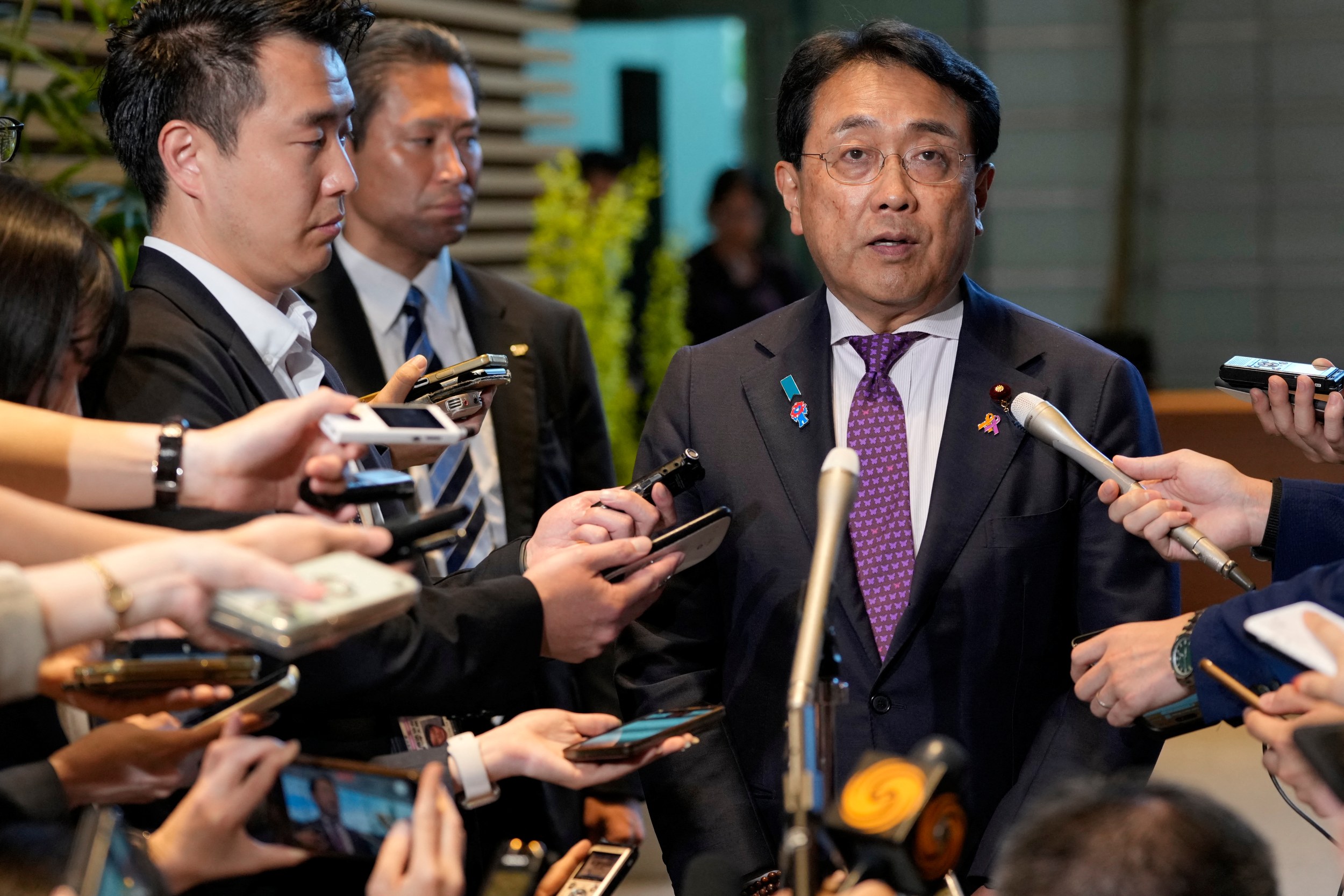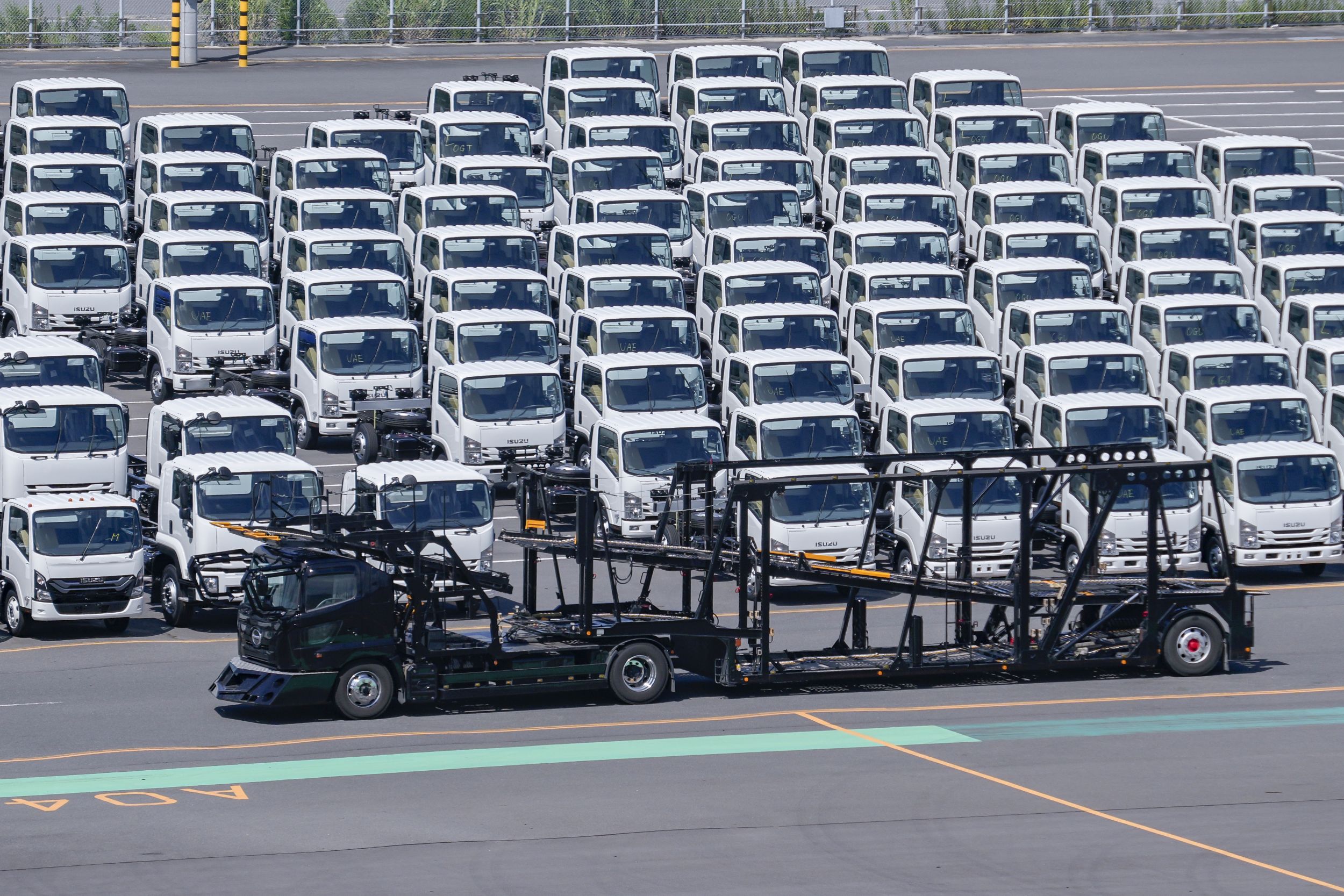
The US confirmed it would end stacking of universal tariffs on Japan and cut car levies as promised, Tokyo’s top trade negotiator Ryosei Akazawa said after a meeting on Thursday with his counterparts in Washington.
His comments following talks with Commerce Secretary Howard Lutnick and Treasury Secretary Scott Bessent provided some relief amid doubts over the details of the trade deal reached between the two countries last month.
The US officials expressed regret that the stacking rule had been applied to Japan despite a verbal agreement, and said Washington would refund any overpaid levies, he said. No time frame was agreed for the implementation, Akazawa said after the meetings.
ALSO READ: Trump says US completes trade deal with Japan
There has so far been no official comment on the latest meetings from the US side.
Japan was hit with higher-than-expected universal tariffs as part of the wave of new levies introduced by the Trump administration on Thursday. While the scale of the discrepancy was likely minor, the confusion sparked renewed criticism of Prime Minister Shigeru Ishiba, who already faces calls to step down over a poor election showing.
“We have confirmed that when the US side takes measures to revise the executive order on universal tariffs, they will issue another order to reduce tariffs on cars and auto parts,” Akazawa said.
“We will continue to urge the US side, through all available means and channels” to make those things happen, he said.
He added that he wasn’t sure when the orders would be issued, but he didn’t expect it to take as long as six months or a year.
Under the stacking system, the 15 percent tariff applied to Japan is being added to existing levies on its products. When Japan receives an exemption, Akazawa said that the 15 percent rate would apply to items that previously had levies of less than 15 percent, while items that in the past had tariffs of more than 15 percent will no longer face additional levies.
More importantly for the Japanese economy, carmakers are still struggling with tariffs at 27.5 percent — a combination of a previous 2.5 percent rate and a new 25 percent levy applied by Trump.
READ MORE: Japan PM Ishiba calls Trump's new tariff decision 'truly regrettable'
“With each day that passes, the losses incurred by Japanese companies are mounting,” Akazawa said, adding that some companies are seeing an hourly loss of ¥100 million ($679,000), without citing which companies they are.
“In this respect, there is no change to what we have been saying previously. We are seeking the issuance of the executive order as quickly as possible — whether by a day or even by a moment,” he said.

The lack of clarity on the timing of a promised cut to 15 percent is making it hard for the companies, mainstays of the economy, to plan ahead. The auto sector employs roughly 8 percent of the nation’s workforce and is a trend setter for wage growth, which has supported the central bank’s gradual interest rate hikes.
Toyota Motor Corp this week lowered its annual guidance as it warned of a ¥1.4 trillion ($9.5 billion) hit to its bottom line from US tariffs. The world’s biggest carmaker now sees ¥3.2 trillion in operating income for the fiscal year ending in March 2026, down from its initial forecast of ¥3.8 trillion.
Some carmakers are already pinning their hopes on seeing the tariff cut sooner rather than later. Honda Motor Co raised its annual profit forecast on Wednesday to reflect the 15 percent tariffs on Japanese goods, estimating ¥700 billion ($4.7 billion) in operating profit for the fiscal year ending March 2026, up from the prior guidance of ¥500 billion.
Japanese stocks rose on Monday morning reflecting optimism over Akazawa’s comments, with shares of Toyota and Honda increasing 3.8 percent and 3.6 percent, respectively.
ALSO READ: Japan's exports drop as US tariffs hit automobiles, pressure set to intensify
The Trump administration has come under fire from the US car industry over the levies agreed with Japan, which critics say fail to address the biggest source of the US trade deficit with its Asian ally. About 80 percent of the trade gap was due to cars and car parts last year.
Akazawa chalked up the discrepancies over the stacked tariffs as a misstep introduced during the administrative processing of the agreement, insisting that Japan and the US were aligned on the trade deal agreed in late July. He also defended his call not to draw up the agreement in writing — a decision that has been questioned by opposition lawmakers as confusion mounted over the finer details of the deal.
Still, he did not give an indication of when the lower across-the-board and reduced auto tariffs may come into effect, instead saying it will happen “in a timely manner”. He hinted that he may continue to travel to Washington, and said he’d invited his US counterparts to Japan.
“As I understand it, the US side will handle the matter in a reasonable manner. That is why we are saying the tariffs will be implemented ‘in due course’,” he said.


